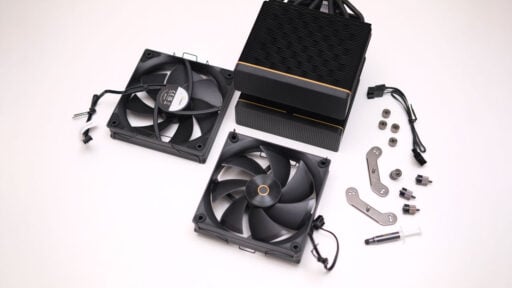Ladies and gents, we are taking a look at the ASUS ROG Swift PG27UQ gaming monitor. One of the highlights we’ve seen at ASUS’ booth during COMPUTEX 2018, featuring High Dynamic Range support. One of the first on this saturated gaming market.
Table of Contents:
Technical Specifications
The ASUS ROG Swift PG27UQ not only features HDR, since it is also a thorough-breed gaming monitor under the hood. Bells and whistles included is the support for 144Hz refresh rate, G-SYNC and 4K UHD resolution under a 27″ QLED package.
| Display | |
| LCD Size (inch) | 27 |
| Aspect Ratio | 16:9 |
| Resolution | 3840 x 2160 |
| Refresh Rate | 144Hz (Overclocked) |
| Display Area(mm) | 596.16 x 335.34 |
| Pixel Pitch (mm) | 0.155 |
| Brightness (cd/㎡) | 600 |
| Contrast | 1000:1 (50000:1, HDR) |
| DCR | NA |
| Panel Type | QLED (Quantum Dot) |
| Response Time | 4ms (Gray to Gray) |
| Connectivity | |
| Input/Output Connector | HDMI, 2x DisplayPort |
| USB/Audio | Headphone out, Mic in, 2x USB 3.0 Type-A |
| Ergonomics | |
| VESA Wall Mount | 100 x 100 |
| Pivot | 0°/+90° |
| Swivel (left/right) | -35°/+35° |
| Tilt (°) | -5°/+20° |
| Hight Adjustment (mm) | 0/120 |
The ASUS ROG Swift PG27UQ is again a 4K UHD display based on a QLED panel. The contrast ratio is rated at 1000:1, though it goes way up to 50000:1 if HDR is turned on. Brightness is also rated at 600 cd/㎡, which is also chart topping. Response time is rated at 4ms GtG. This gaming monitor supports Nvidia G-SYNC yet it doesn’t feature any Anti-Motion Blur technology.
Design, Build and Connectivity
The ASUS ROG Swift PG27UQ is a 27″ gaming monitor with sleek lines and passive aggressive looks. It weighs almost 10 kilograms which is a testament to the materials used and the overall build quality of the product.
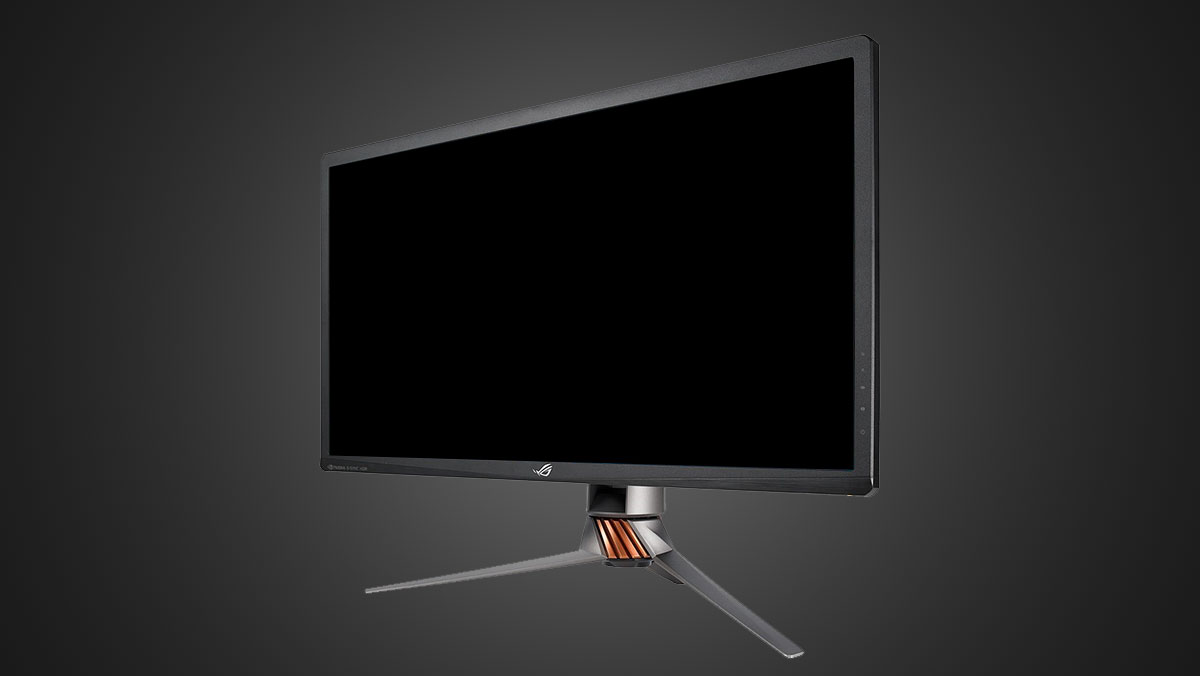
The ASUS ROG Swift PG27UQ features RGB lighting at the back. The signature aluminum base also adds up to the overall flare of the monitor but it does extend the foot print quite a bit, just like any ROG Swift displays we’ve tested before. A large desk is required to appreciate this beauty.

Screen coating used is a blend between gloss and a matte finish. This is to accentuate the color reproduction of the panel while maintaining its functionality to diffuse ambient lighting. The bezel on the other hand is decent enough to allow multi-monitor setups. As if there’s someone sane enough to buy a triplet.
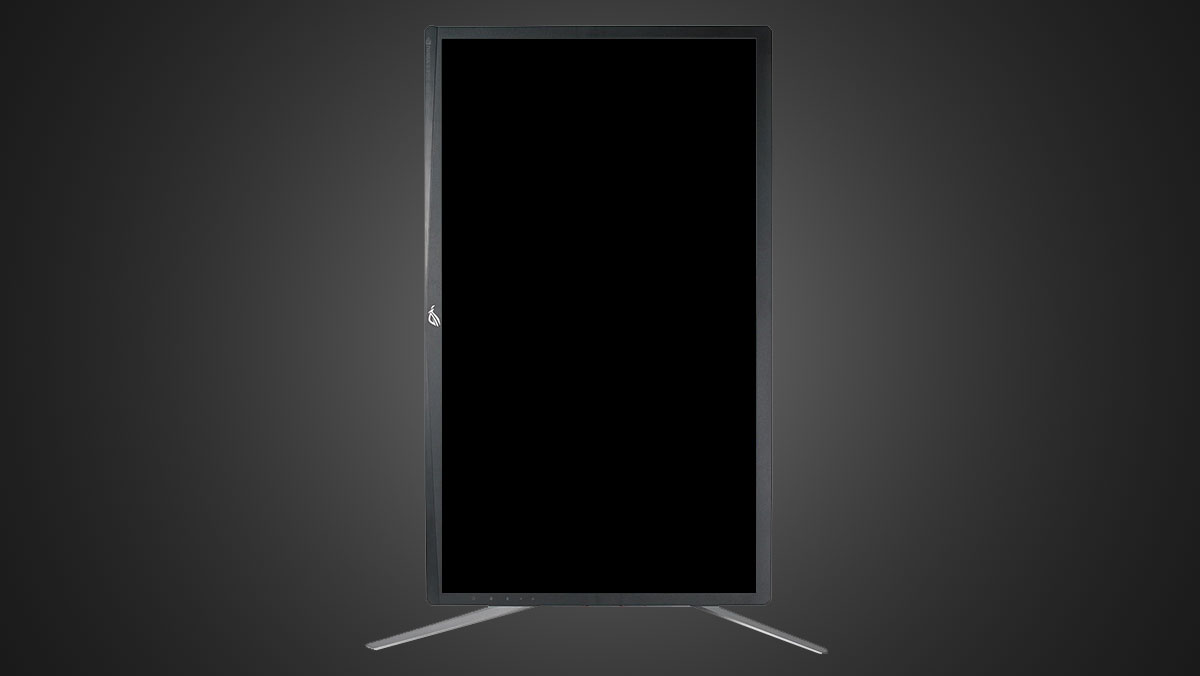
ASUS made sure that the ROG Swift PG27UQ is made with ergonomics in mind. It tilts from -5° to 20° and swivels at a maximum of 40°. Height is also adjustable at a maximum of 120mm, plus it pivots for that not so normal portrait look. Another feature worth noting is the ROG Light Signal. It basically projects an ROG logo to a nearby surface. Think of it as ROG’s own Bat-Signal.
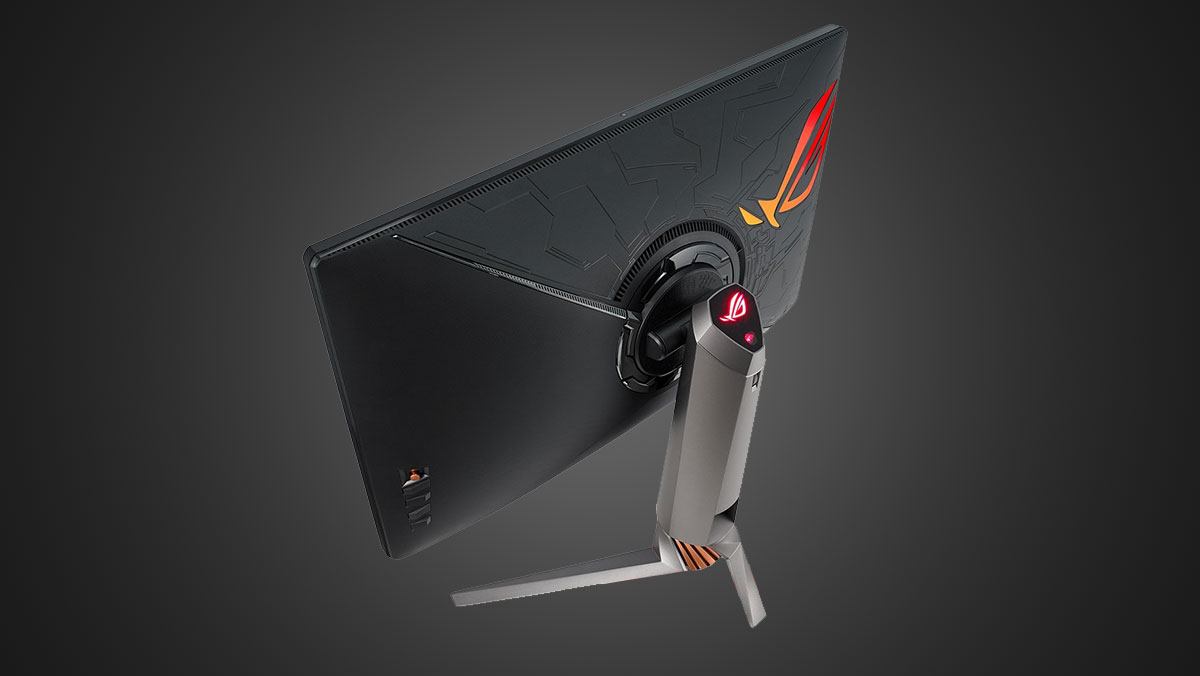
As for display options, ASUS went with a single HDMI and a single DisplayPort. We also have an audio-in / out, plus dual USB 3.0 ports. There’s also a fan inside to keep things cool enough. I’m looking at you, G-SYNC module.
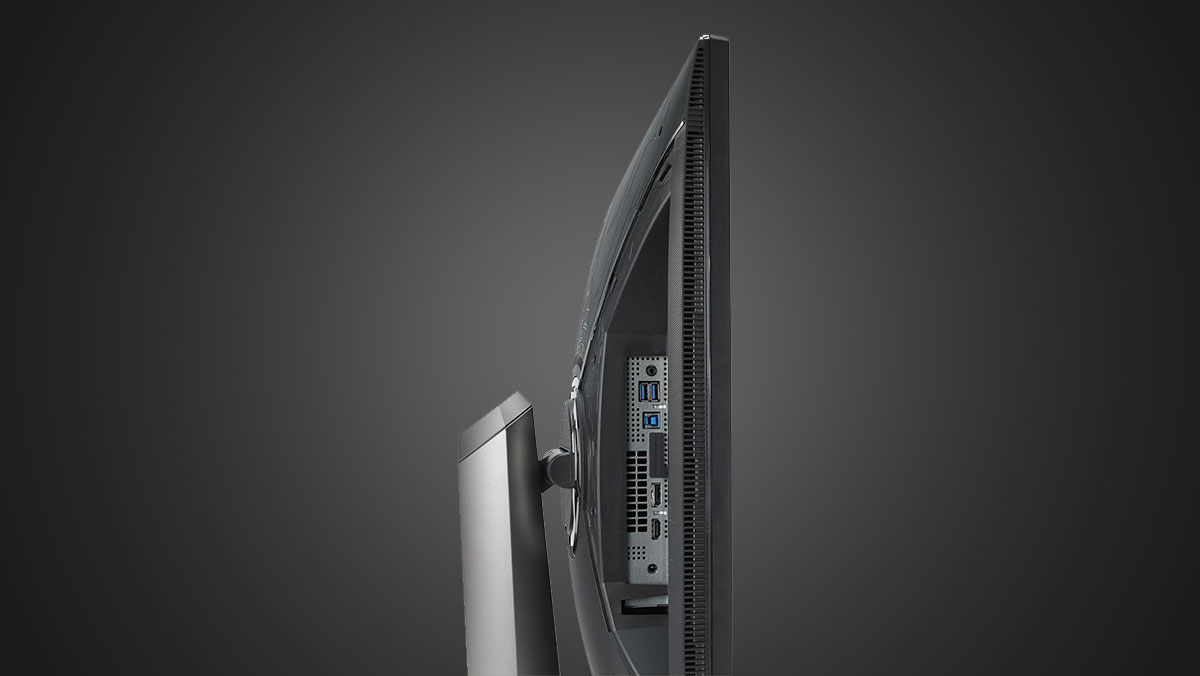
Power is unfortunately external. A total bummer considering the size of the monitor and the stand. We have a cable management hole though.
OSD
The ASUS ROG Swift PG27UQ features a familiar OSD and navigation options. That said, it is easy enough to use especially with a joystick at bay.

The Color menu is where you’ll find additional modes geared for everything except gaming. Image on the other hand is where you of course setup the overdrive, back lighting and black levels.

ASUS really did a great job with this OSD. Comparable to the ones we’ve tested before with a few additions here and there.

Test Setup
Our test setup relies on the Blur Busters TestUFO Motion Tests and the Data Color Spyder5ELITE Display Calibration System. The cameras used throughout the review for the motion artifact and high speed assessments are the Fujifilm XE-1 and the Nikon 1 J1.
| TEST SYSTEM SPECIFICATIONS | |
| PROCESSOR | Intel Core i5 6600K |
| MOTHERBOARD | ASUS Z170-A |
| COOLER | Cryorig C1 Top Flow |
| MEMORY | Crucial Ballistix Tactical DDR4 @ 2666MHz 2x4GB |
| GRAPHICS | ASUS ROG STRIX GTX 1060 OC 6GB |
| STORAGE | Crucial BX200 480GB |
| POWER | Corsair RM850X 850W |
| DISPLAY | ASUS MG278Q |
| OS | Microsoft Windows 10 Pro |
Calibration
Target for calibration is a 2.2 Gamma value, with a White Point at 6500K and a Brightness value set at 120 cd/㎡. Calibrated values are then analyzed with the Spyder5ELITE Display Analysis tool. Do note that Dynamic Contrast Ratio and other extra features built within the OSD are disabled during the tests. The following OSD values are selected for the display calibration.
| ON SCREEN DISPLAY SETTINGS | |
| Brightness | 26 |
| Contrast | 50 |
| Saturation | NA |
| Temperature | Normal |
| Gamma | 2.2 |
| Preset | Racing, SDR Mode |
If you wish to use the calibrated ICC profile taken from our Spyder5ELITE result, just send us a message. You may also read our guide on how to use ICC profiles.
Gamut
The Gamut test evaluates the color spaces the display exactly covers. That includes industry standard spaces such as sRGB and AdobeRGB. Higher percentage values are better.
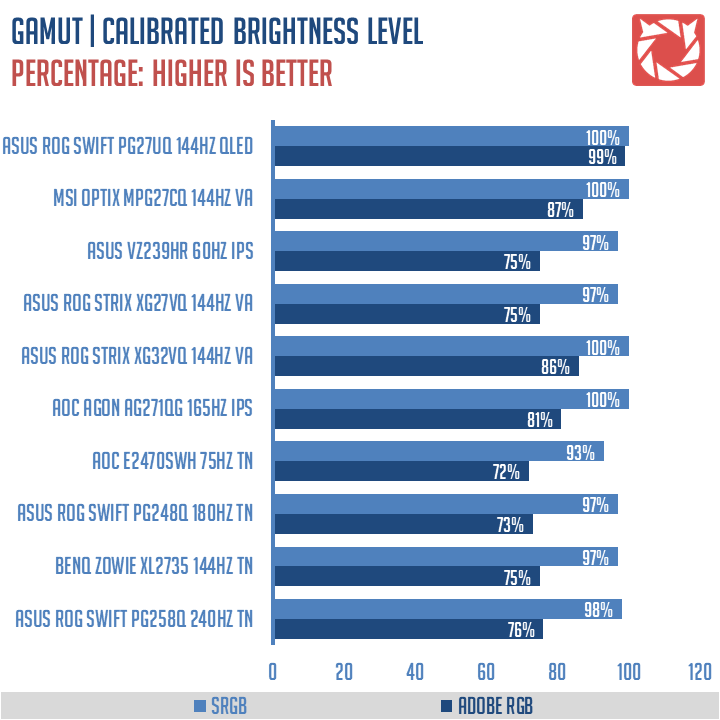
Color space coverage is damn excellent. We got a 100% sRGB coverage while AdobeRGB results are at 99%. Even better than our new curved favorite from the MSI.
Tone Response
Tone response is where we check the display’s Gamma values and or presets if there are any. We then compare the results with industry standards of 1.8, 2.2 and 2.4. Closer to these values are better.
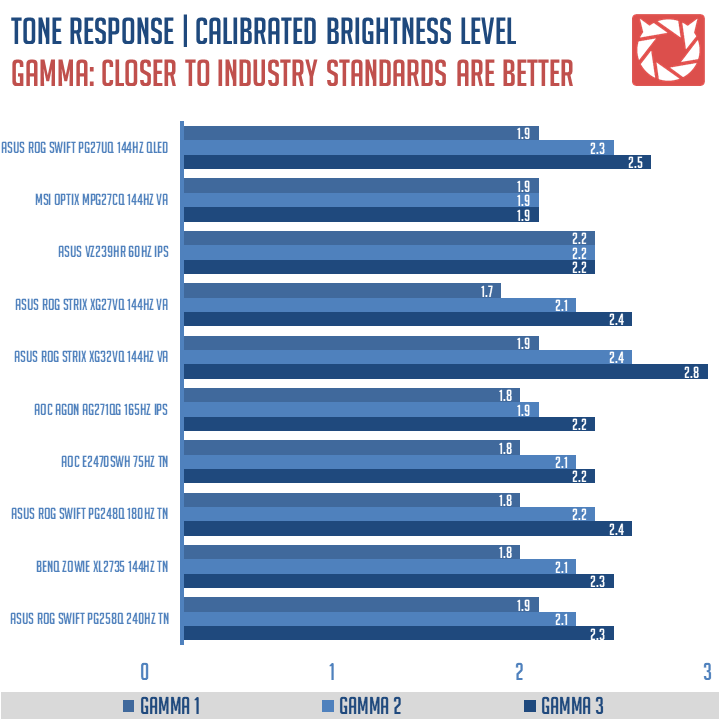
Tone response for the 3 gamma levels are off by +0.1. Nothing extraordinary here but it’s not bad either.
Brightness and Contrast
The result of the tests shows us an overview on how the display actually performs in terms of Brightness and Contrast ratio on varying brightness levels. Higher is better.
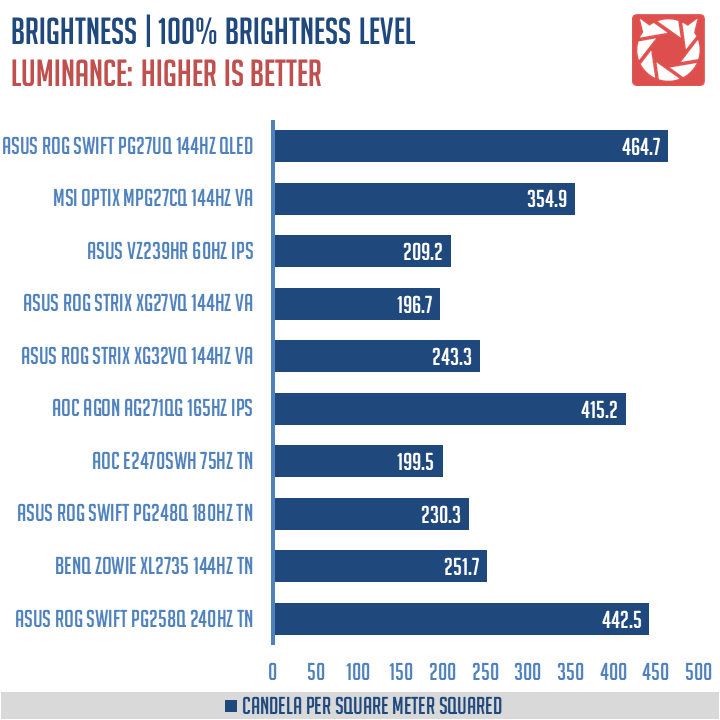
Brightness at 100% using our calibrated profile is rated at 464.7 cd/㎡. Contrast ratio on the other hand is at 2300:1. Be reminded that these figures were obtained on SDR mode.
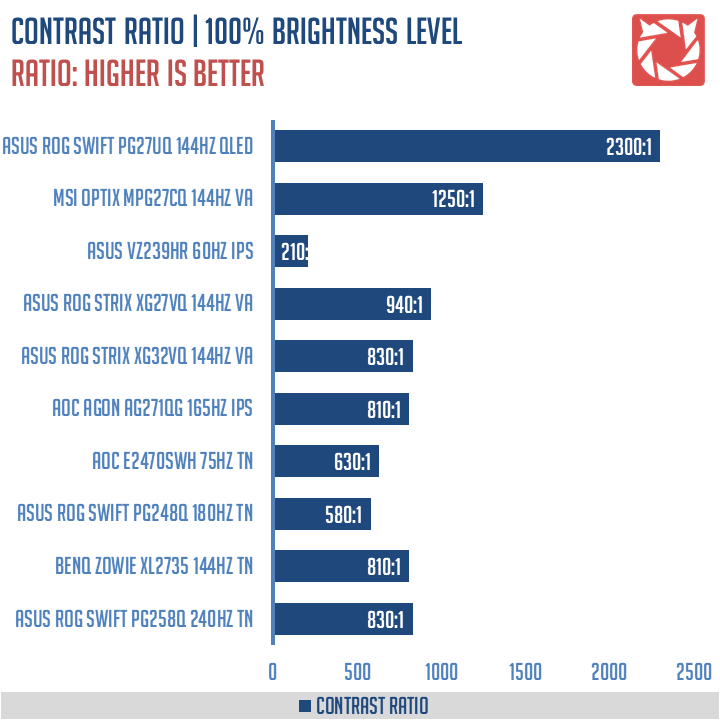
Screen Uniformity
This test shows us an overview of the screen’s uniformity at the calibrated brightness level. The closer this value to 0, the better the performance of the panel.
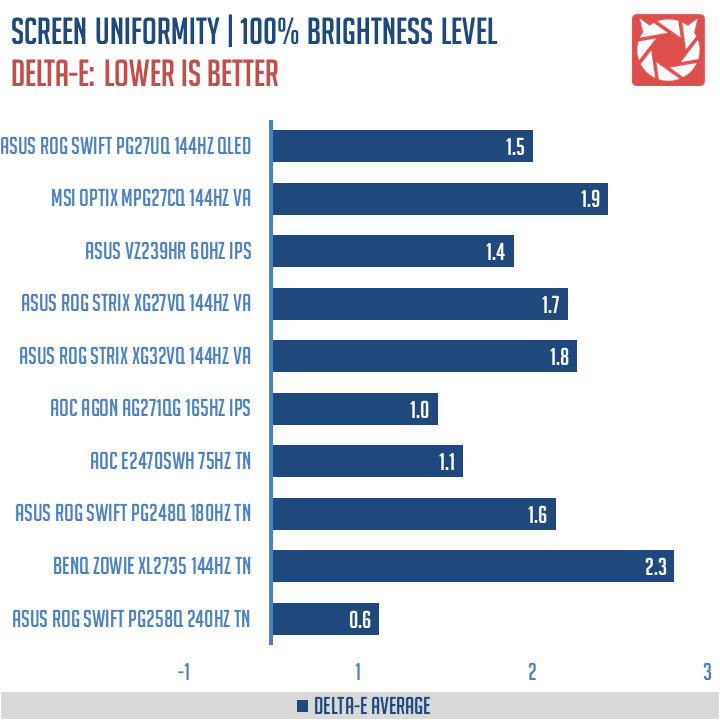
Screen uniformity is decent. Nothing extraordinary around this area I assume.
Color Accuracy
This test shows how well different basic color hues are being reproduced by the display. These color tones correspond with the Datacolor SpyderCheckr. Lower Delta-E values are better.
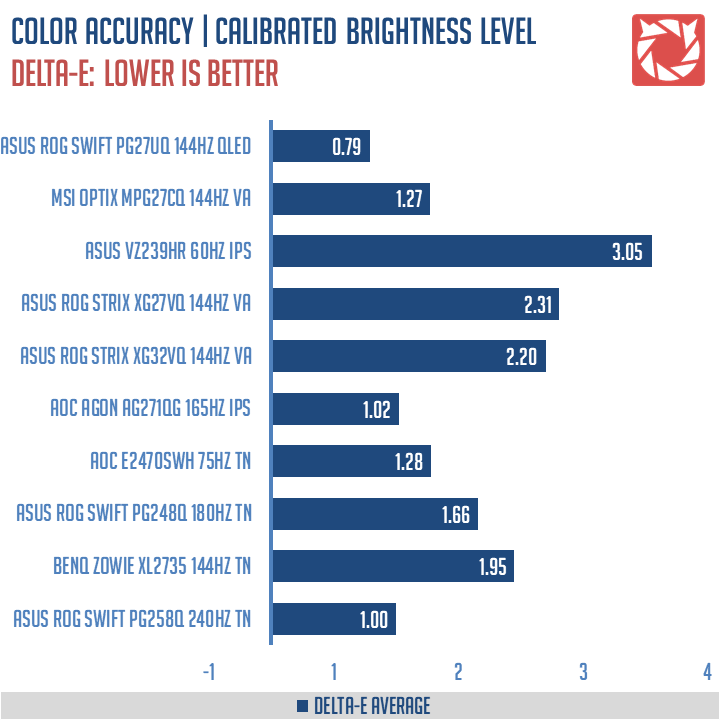
Color accuracy is what I could say outstanding. The best so far after the AG271QG and the PG258Q panel.
Power
The power consumption is checked with a power meter. Measurements are taken at maximum brightness level.
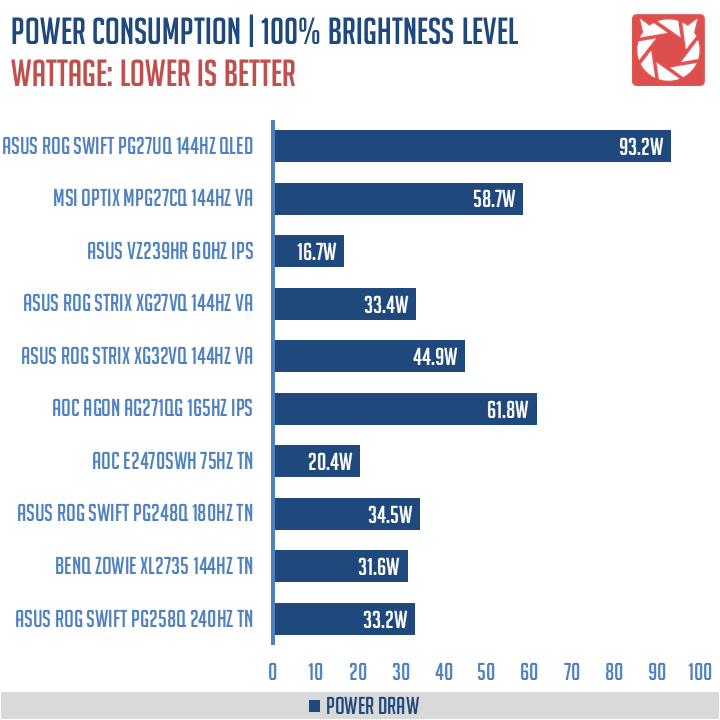
With an active cooling system, G-SYNC and individually lit pixels, the ASUS ROG Swift PG27UQ featured the highest power requirement out of the bunch.
Backlight Bleed
Backlight Bleed is the phenomenon where backlighting from a display leaks. This is prevalent with LED backlight enabled displays where the LEDs used to light the panel are situated at the edges of the display. Testing the Backlight of the display is conducted on a dim room, simulating the recognizable amount of bleed for such scenario.

Viewing Angles
Viewing angles are also tested to check out how the display panel performs on various positions. This should be helpful if you are looking for a panel that could be used on multi-monitor setups.
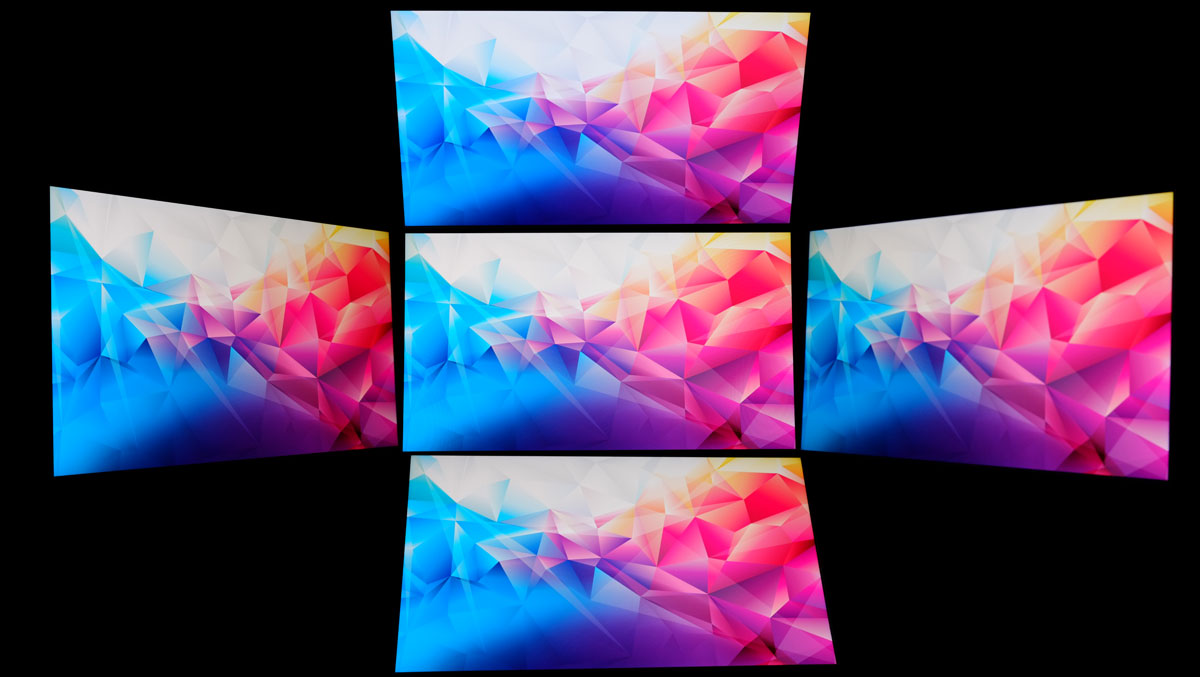
Backlight bleed at 120 cd/㎡ is totally unnoticeable with the ASUS ROG Swift PG27UQ . Viewing angles are also excellent.
Input Lag
The Button to Pixel Input Lag is a combination of system latency from the point of input, processing and display output. That is the basic of it and to quantify the approximate Button to Pixel Input Lag, we utilized Quake 3 Arena as our main shooter. The game is set at the native resolution of the panel with the FPS locked at 250. We check how much delay in milliseconds it took the display to actually output the signal via a 1200 FPS high-speed camera with ~0.83ms of accuracy.
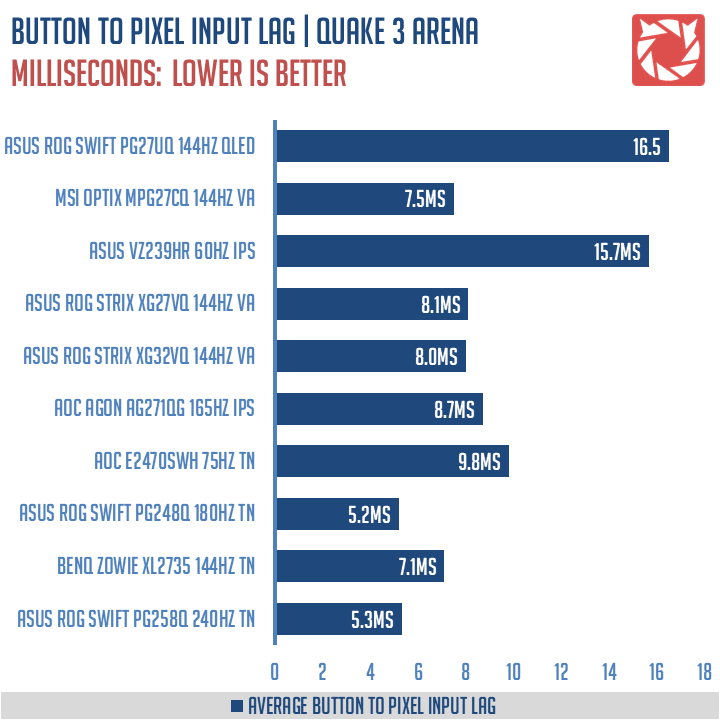
Our button to pixel lag results shows that the ASUS ROG Swift PG27UQ has an average of 16.5ms button to pixel latency. It’s decent, but for a gaming display we expected better.
Frame Skipping
Frame Skipping is the phenomenon where dropped frames and missing refreshes occur due to ineffective refresh rate overclocking. If your display exhibits such issues, it should be perceptually similar to in-game frame skipping. We are are utilizing the Blur Busters Frame Skipping Checker to test if there is any.
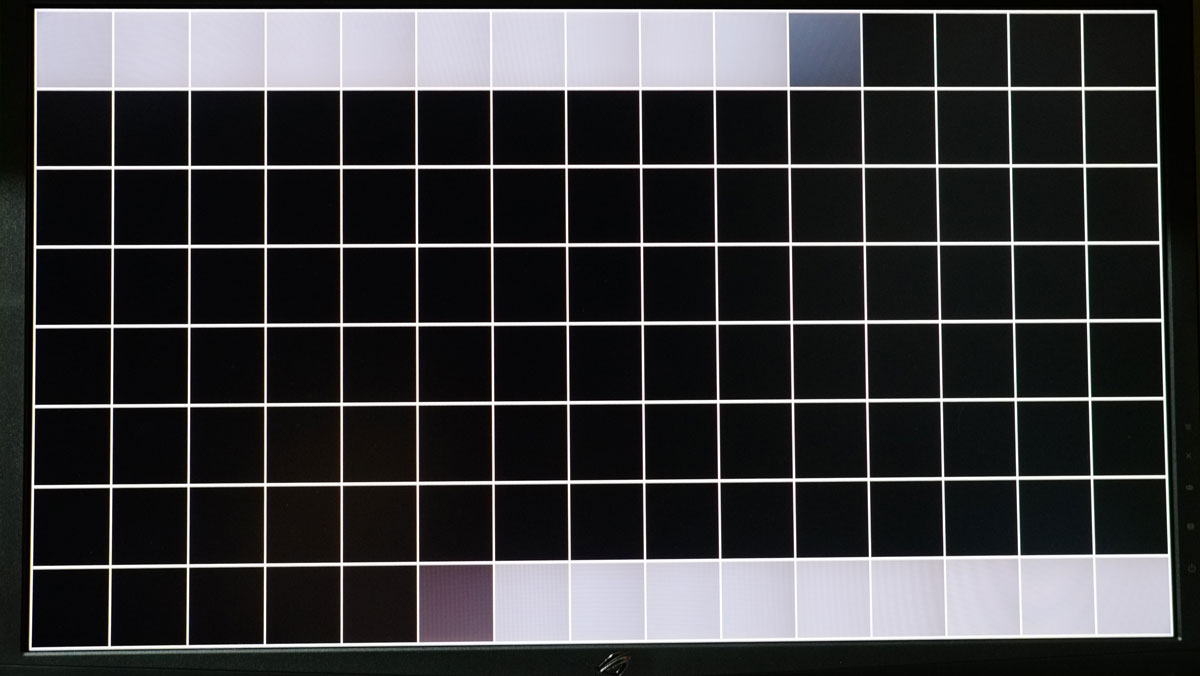
There is nothing to worry about the ASUS ROG Swift PG27UQ when it comes to frame skipping.
MPRT
Setting up a pursuit camera courtesy of Blur Busters allows us to a great extent, perceive the actual motion blur of the display. Using such method also allows us to check out for other motion artifacts including ghosting, inverse ghosting and other artifacts. This pursuit camera test is a peer-reviewed invention.
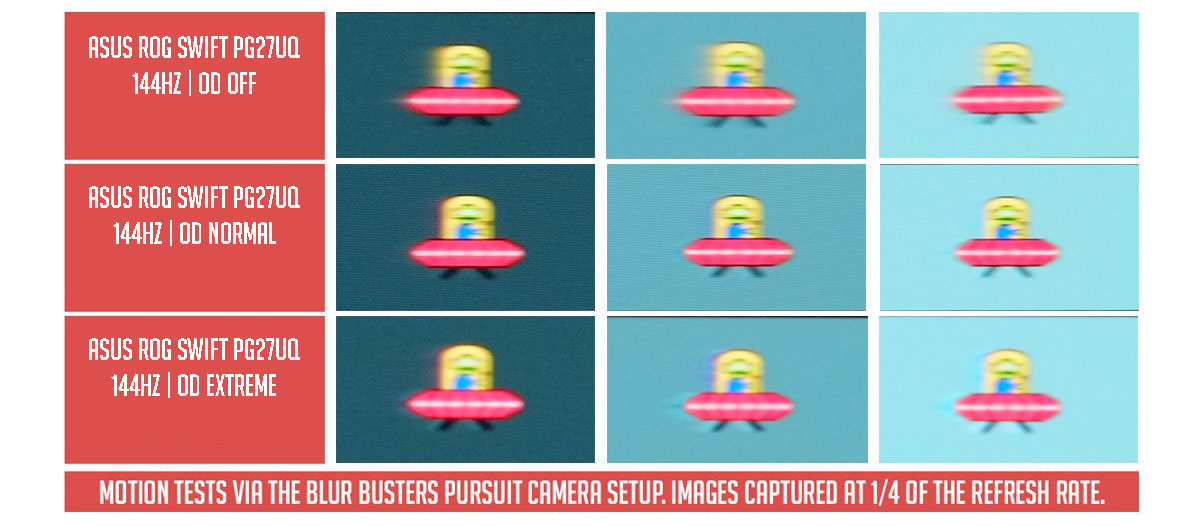
At 144Hz refresh rate, the ASUS ROG Swift PG27UQ hinted a motion persistence below 8ms. Overdrive is best set at the normal at all times. It’s just sad that ASUS doesn’t have any form of anti-motion blur technology to back this thing up.
Final Thoughts
The ASUS ROG Swift PG27UQ supports a maximum of 144Hz so it’s pretty smooth and responsive. Though this is no curved display, it makes up for its HDR support and overall image quality.
If you’re the kind of gamer who’d trade your soul just to eliminate tearing, then the Nvidia G-SYNC is for you. Setting it up is breeze and it’s an excellent way to eliminate tearing. Dipping to lower frame rates and shooting up again also feels smoother with the feature turned on. A requirement for gamers with compatible Nvidia graphics that couldn’t keep up with the refresh rate at 4K UHD.
The ASUS ROG Swift PG27UQ is the first 4K UHD QLED HDR gaming monitor that we have tested. It blew my mind at COMPUTEX 2018 and it did it again like I’ve never seen it before. Suffice to say, we really enjoyed the HDR experience which is exactly near impossible to explain with pictures alone. It’s just that good. All benchmark considered, it is a blast of a gaming monitor to work with. Let the benchmarks speak for themselves.
Gaming oriented features are excellent too, although I must say we expected a bit more around the latency area. 4ms GtG is all good, but button to pixel latency is on the ledge. Since this is a G-SYNC display, we also expected some form of anti-motion blur support via the chip. It’s not the case with this display maybe due to the nature of HDR and back lighting. Then there’s also the power and the hum of the active cooler.
On the topic of HDR, the display actually supports it at a maximum of 98Hz (10-bit). ASUS uses a sampling method called Chroma Subsampling to make do with the whole “4K HDR support at 144Hz”. Basically, we get compressed output for the bandwidth requirement of 4K UHD + 144Hz refresh rate. This isn’t bad, considering our not so perfect human eye sight. But, it is still noticeable when you look for it. That’s true on some quirky text and background color combinations.
Value wise, the ASUS ROG Swift PG27UQ comes in hot at 142000 PHP. That’s about $2600 in USD if you prefer to see less zeroes. It is expensive, as with any well designed first generation high performance product. The good thing? It is the closes thing you could get to the gaming equivalent of a luxury sports car on a desktop.
ASUS ROG Swift PG27UQ Monitor
Summary
The ASUS ROG Swift PG27UQ HDR Gaming Monitor is expensive. There’s nothing we or ASUS could do to deny that fact; As with any well designed first generation high performance product. It is the closes thing you could get to the gaming equivalent of a luxury sports car on a desktop.


